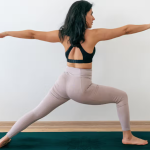What are the important relationships in our lives? Our other halves, our parents, our children, our besties – but what about the student-teacher relationship? How important is that? According to ancient Indian culture, the relationship between a Guru and a shishya (disciple) is a very special one, even transcending the bond between parent and child, or husband and wife. While that may be a bit extreme for our Western sensibilities, it’s undeniable that finding the right teacher is a crucial part of our yoga journey.
Yoga is a lifelong journey and the teacher that guides you on that journey is a key part of it. They will ask you to do things with your body that it’s never done before and you need to have absolute faith in them that they will teach you safely while challenging you to move beyond your comfort zone at the same time. Here is our take on how to find the right teacher for YOU.
First Impressions
It’s important to notice your first impression of a teacher – you can learn a lot in the first few moments of the class. A friend recently told me about a yoga class she went to in which the teacher didn’t make eye contact with her once in a 60-minute class. She didn’t go back again. You need to feel that the teacher gives inspiring demonstrations, is open and friendly, while being strict enough to ensure that you don’t wimp out.
What’s their yoga practice like?
To really be inspired by your yoga teacher you need to be inspired by their practice. Of course, as teachers get older their bodies might not be able to do the ultra jazzy poses, but you can see by looking at a teacher’s poses whether their practice is something innate or not. The senior teachers that I respect have the most incredible practice – as well as great humility. I aspire to be a 70-year-old who can do half of what they can do.
Are they encouraging you to move your practice forwards?
A really good teacher will make sure your practice is evolving and not stagnating. They will do this with patience and instinctively know when you are ready to move to the next challenge, not because your friend is doing it, but because you and your body are ready. At the same time, a teacher will know when to encourage you to take a step back and go back to the basics, when you’re nursing an injury, or if you’re getting stuck in bad habits.
Do you trust them?
In the Disney movie Aladdin, when he leant down off the magic carpet to take Princess Jasmine’s hand he asked her a very important question: ‘Do you trust me?’ And like Jasmine, we need to consider our answer before joining our teacher on that magic carpet of yoga and being transported to ‘a whole new world’. If you have faith in your teacher you will find that you are capable of more than you ever thought. If you trust them, they will lead you to meet yourself through yoga.
Stick to the ‘right’ teacher
In the Iyengar yoga tradition, and to some extent Ashtanga yoga too, chopping and changing teachers is frowned upon. Ideally, you go to a teacher who is more senior than you (if you’re a teacher) and then you stay with them forever. In reality, this isn’t often the case.
The reason why it’s not encouraged is partly due to the deep respect held for the bond between a Guru and their student. If students change teachers every 5 minutes then that bond becomes meaningless and the teacher-student relationship just boils down to a financial transaction.
Also, the advantages of having a teacher that you know and trust and who knows you and your body well, are many. They are the mirror to your yoga practice and can help you to progress more than you would otherwise.
But why the ‘right’ teacher can change
I recently had a conversation with a yoga teacher friend who told me that she’d had a hard time in the last few months after a close family bereavement. She found that during this period she was no longer going to the classes she usually attended. We talked about why this would be and it transpired that the class she usually went to was taught by a demanding and charismatic teacher who pushes their students. Most of the time this really worked for my friend as she felt challenged, but in this time of emotional frailty, this approach wasn’t what she needed, and without even considering why she was doing it she returned to a class with a composed and compassionate teacher.
Although it’s great to be loyal to a teacher who gets to know you and can act as a guide, it is important to occasionally re-evaluate your needs as a student.
What’s your role as a student?
We are used to being consumers, where the old adage holds that the customer is always right. But the teacher-student relationship isn’t always like that. We bring ourselves to the relationship and we need to look to our own half of the agreement.
‘Obedience’ is practically a dirty word these days. We’re all being told to ‘follow our innermost desires’ etc all the time, and that’s all very well if you’re floating about in a field, but the discipline of yoga requires just that: discipline. And when the teacher instructs then the role of the student is to obey. Listening to what you are told to do is part of the process of yoga. Putting what we think we know to be right to one side, and putting out trust in the teacher to show us the right path.
Why we need to be our own best teachers
As well as an external guru, it is also crucial that we learn to cultivate the guru within. The literal translation of guru is ‘gu – darkness’ and ‘ru- light’ – the teacher leads the student from darkness to light. In the same way we need to find the mental strength to remove the obstacles to yoga and practice, so that we can let our inner light shine out into the world.













